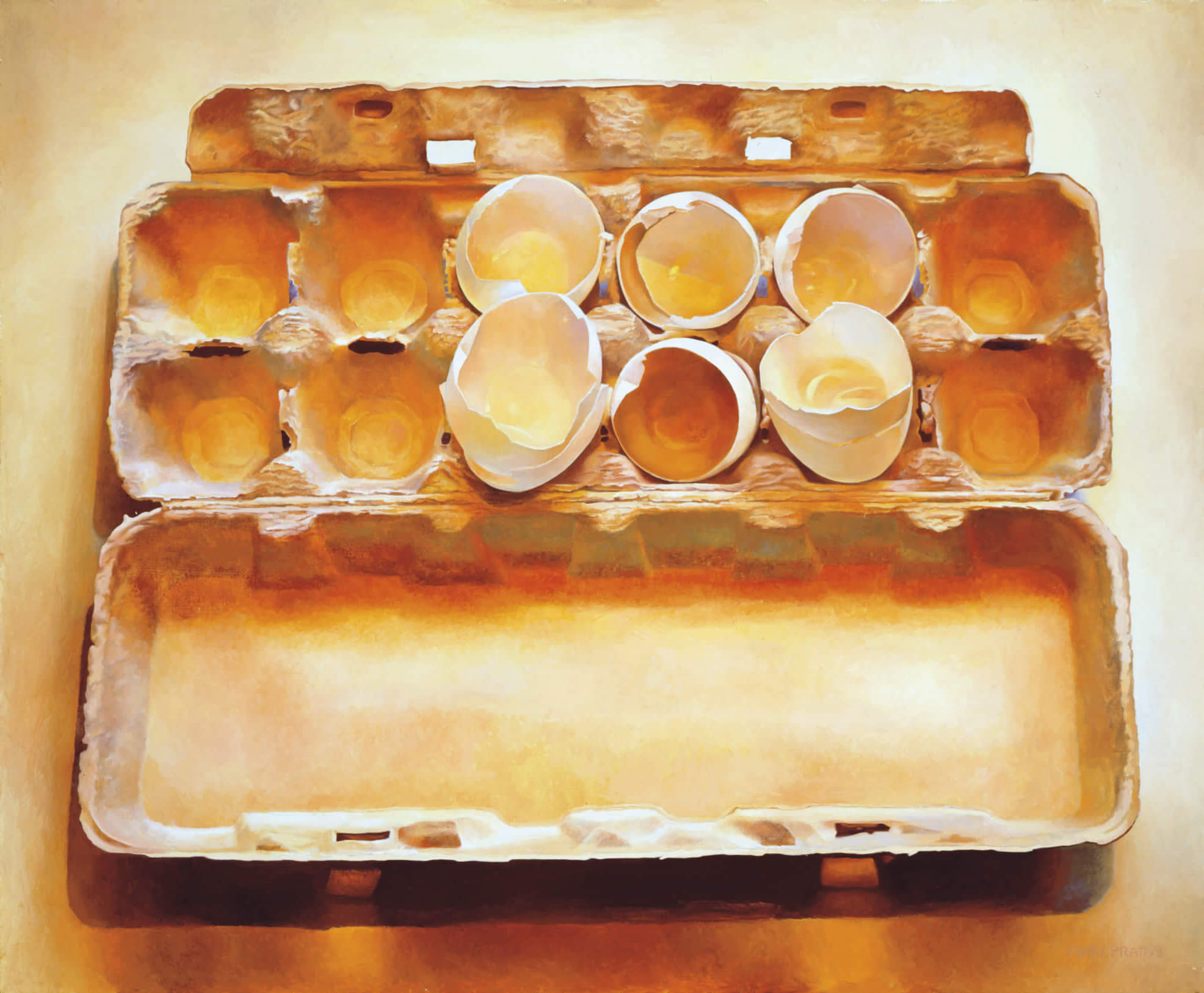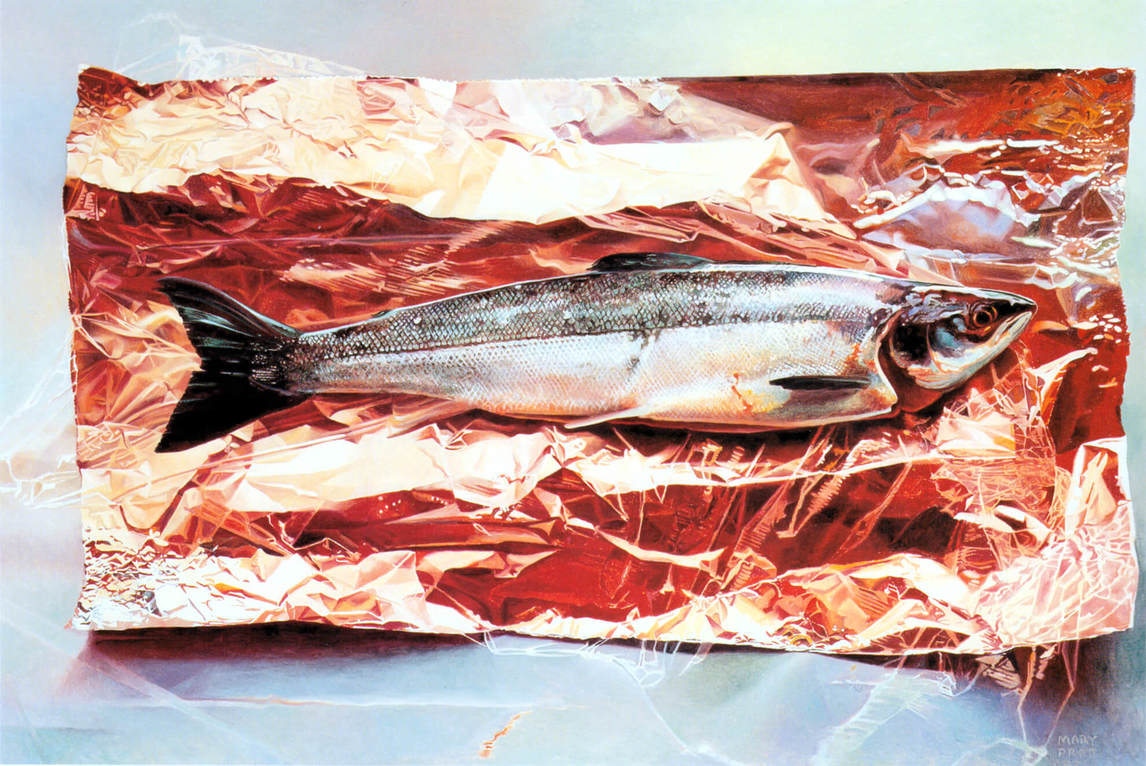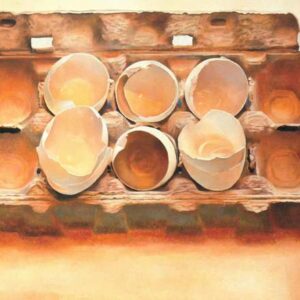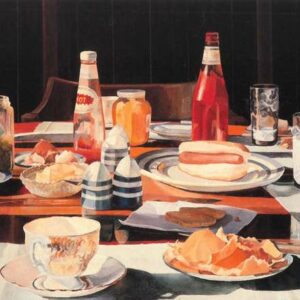Eggs in an Egg Crate 1975

Mary Pratt, Eggs in an Egg Crate, 1975
Oil on Masonite, 50.8 x 61 cm
Memorial University of Newfoundland Collection,
The Rooms Provincial Art Gallery, St. John’s
In 1975, Mary Pratt had recently lost twins. The first was a late-term miscarriage and the second, David, lived only a day after his premature birth. Eggs in an Egg Crate was the first work Pratt made following that traumatic event. She came to see it as a means of coping. “I showed this painting to a friend, and she pointed out to me that the eggs were empty.” Sarah Milroy is not alone among writers who have found this work one of Pratt’s most moving: “This is an image,” Milroy writes, “of fertility spent, an ethereal lamentation.”

The work is similar in composition to Salmon on Saran, 1974. Both share a view from above, a horizontal central subject, and a neutral background we might assume is a countertop. Eggs in an Egg Crate, however, is suffused with a gentle light that slants slightly from above so that faint shadows are cast in the foreground. The cardboard carton appears to glow with a subtle halo effect.
Pratt’s technical skill is particularly evident in her rendering of the albumen at the bottom of the emptied and stacked eggshells, and of the translucence at the tips of the shells. The work is a meticulous description, an object rendered so carefully that it transcends its context of the kitchen, relaying violence, significance, emotion. The French philosopher Maurice Merleau-Ponty, author of the groundbreaking treatise on sense perception, considers phenomenology to be a similar process: “It is a matter of describing,” he writes, “not of explaining or analysing.”
Pratt wrote much later that she had been making a birthday cake that required a dozen eggs: “As I broke the eggs, I simply put the shells back into the egg crate, intending to close the lid and throw everything into the garbage. However, the light shone on the slippery interior of the empty shells, and the light sank into the porous papier-mâché egg crate, and the textures and colours combined to create an image symbolic of life and abandoned life.”

 About the Author
About the Author
 More Online Art Books
More Online Art Books
 Acknowledgements
Acknowledgements